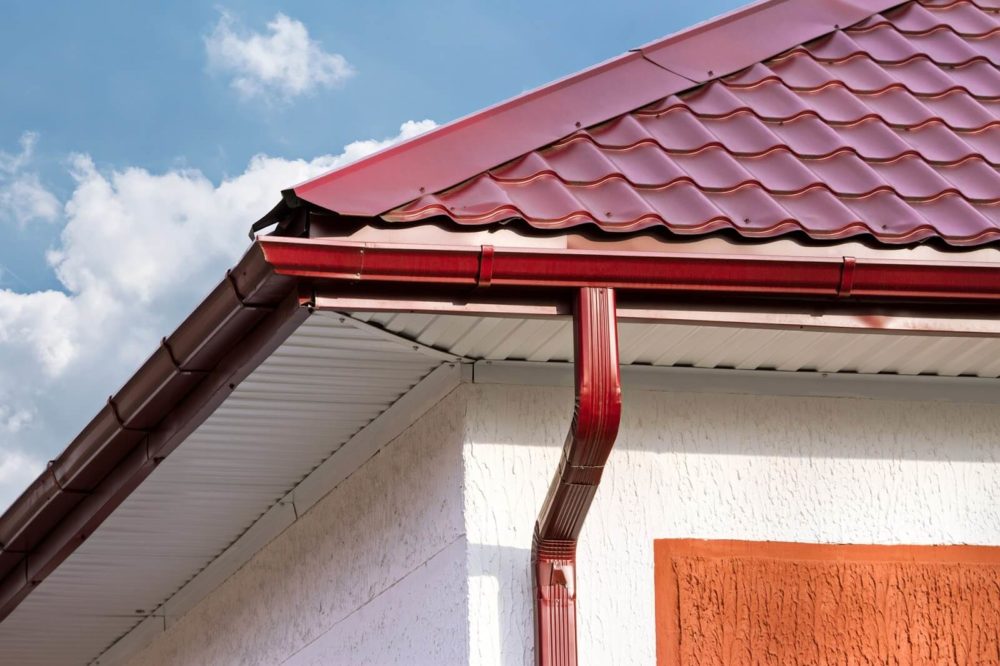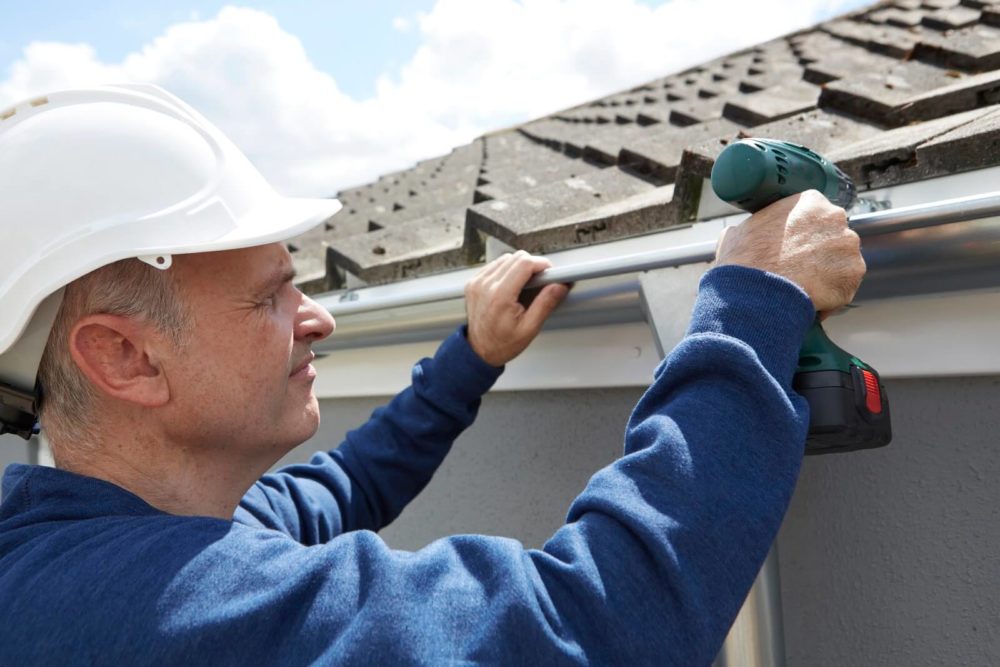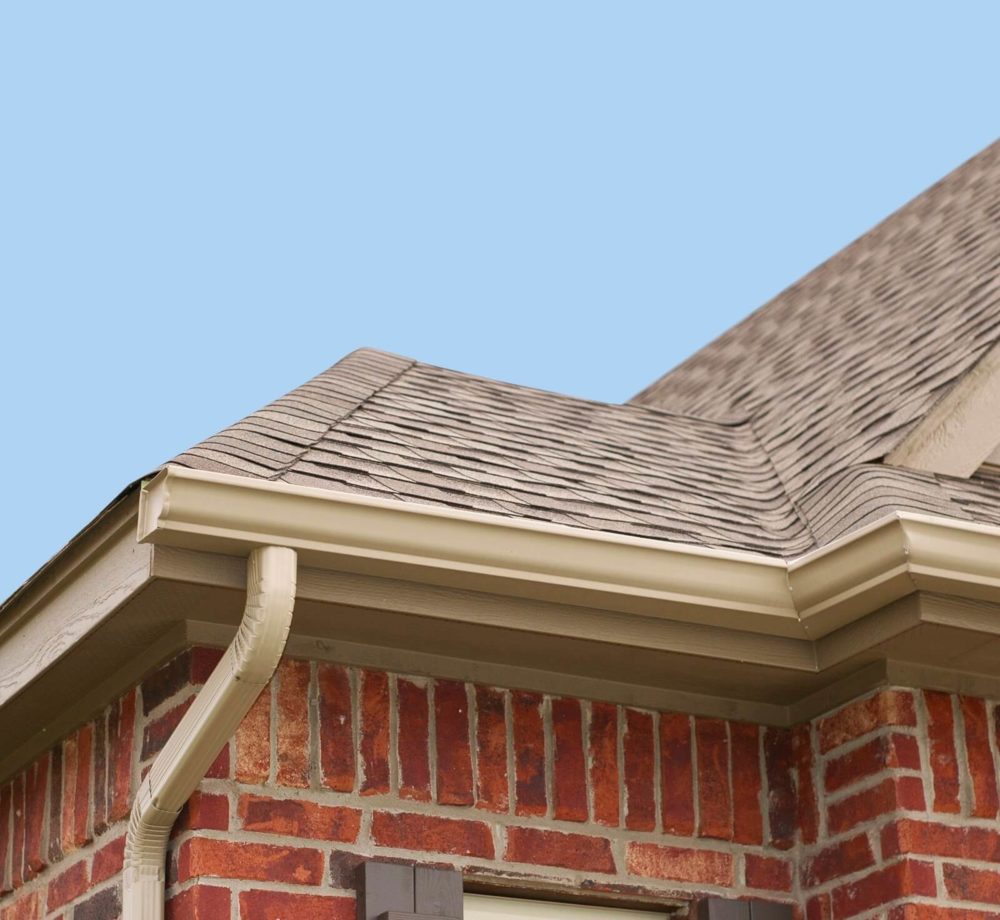Request Quote
Home | Our Blog | How to Connect Two Sections of Gutters
Reviewed by Tomas Kalkys. President.
Qualifications: More than 20 years of experience in residential and commercial exterior remodeling.
Founding farther of Legacy Service.
Written by LegacyUSA Team
posted on Dec 19, 2019
Get Estimates From Roofing Pros

New gutters help prevent water damage and improve the appearance of your home. When you need to seam gutter sections together, as a homeowner, you have the option to either hire helping hands or complete the job yourself. Some homeowners would prefer to do it themselves. Fortunately, connecting sections of gutters is a fairly simple task.
There are two main types of gutters: vinyl and metal. In this article, we’re going to cover how to join gutters for each kind, since they require different joining techniques. We’ll provide a step-by-step process, which you can use as a guide to seam your home’s gutters together and make sure they’re placed on your roof properly.
Not a real zip code.
At Legacy Service, we provide installation and replacement services for any part of your house’s exterior, and gutters are no exception. If you’re looking for a reliable company that will offer you the quality gutter service you need, look no further. We’ll seam your gutters together so that you don’t have to worry about it. Your house will look as good as new! If you’d like to learn more about gutter installation or replacement, give our Legacy Service team a call today at 215-798-9790.
You might be wondering if it’s time to replace your gutters. The best way to tell is to get a consultation from an expert, but you can also check them yourself before to see if you should give them a call. Here are three signs you need new gutters:
You can see cracks or splits – The next time you give your gutters a cleaning, also take some time to look for any cracks or splits. Small cracks might not look like much, but they can grow over time, especially if you live in an area that gets very cold during the winter. If the cracks are large, get them dealt with right away.
You notice rust or orange areas – Not every type of gutter will rust, but some are likely to do so if they lose their protective coating. If you notice signs of rust or an orange coloring around any of the gutter’s areas, it’s probably time to get them replaced.
There’s water damage around the gutters – When you’re cleaning or inspecting your gutters, it’s best to wait for a sunny day. This will help you see if there’s any water damage around your gutters that you need to be aware of. Telltale signs include puddles, water stains, mildew, and rotting fascia.

If you’re thinking of seaming the gutters together yourself, whether you’re repairing or replacing them, you’ll need to gather certain tools and supplies before you begin. We’ve compiled a list of everything you’ll need. They include:
Most of these items can be found at your local hardware store.
Not a real zip code.
As you probably already know, there are differences between seaming together metal and vinyl gutters. For example, metal gutters require overlapping two pieces and riveting them together, while vinyl gutters are designed to snap together easily but may require the use of a sealant or gaskets to ensure a waterproof connection. If your house has metal gutters, follow these steps about how to seam your gutters together:
As you may already know, the process of joining gutter sections differs depending on whether they’re vinyl or metal. For example, vinyl gutters are joined after they’re hung, while metal gutters are easier to install if they’re assembled on the ground and then hung. If your home has vinyl gutters, follow these steps about how to join gutter sections:

Even if you know how to seam gutters together yourself, sometimes it’s easier to hire someone else or get helping hands involved. Our team at Legacy Service can certainly help with that. As licensed roofing, siding, and windows contractor, we have expertise in gutters, and we’re more than willing to help any homeowner throughout Pennsylvania, New Jersey, and Delaware.
We do more than just gutter replacement and installation though. If you’re in need of replacement services regarding roofing, siding, or windows and doors, you can contact our team for assistance. We’ve been helping homeowners achieve the exterior of their dreams since 2005. In fact, we’ve worked our way up to become one of the most reputable roofing, siding, and window companies in the local areas. Through the years, we have assembled and molded a team of experts who are dedicated to perfecting their craft.
If you’re looking for a combination of the highest-rated materials at the best possible service, turn to Legacy Service. Learn more about our home exterior services by giving us a call at 215-798-9790 or contacting us here.
Posted on Dec 19, 2019 in Roof
Read our news
HOW LONG SHOULD A ROOF LAST? ELEMENTS
A lot of elements play a role in maintaining the integrity of the roof, but as a homeowner, the most important components to pay attention to are the underlayment, ventilation, and material.
DIFFERENT TYPES - DIFFERENT LIVES
Choosing the best roofing material for your home is the first important step in ensuring that you have the highest quality roof possible.
METAL ROOF VS ASPHALT SHINGLE ROOFING
Two of the most popular roofing materials on the market are metal and asphalt, and both offer different pros and cons to a customer.
Pros and cons of Asphalt Shingle Roofing
Replacing a roof is an expensive decision, and cannot only come down to cost.


